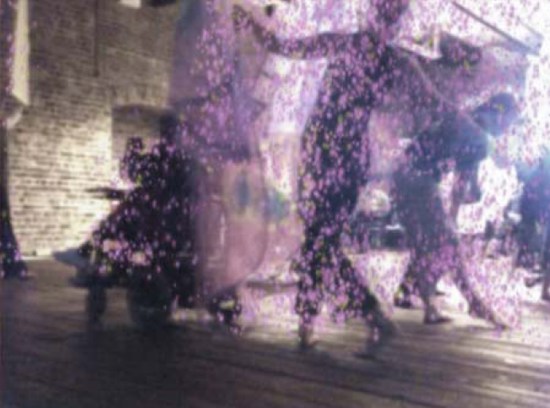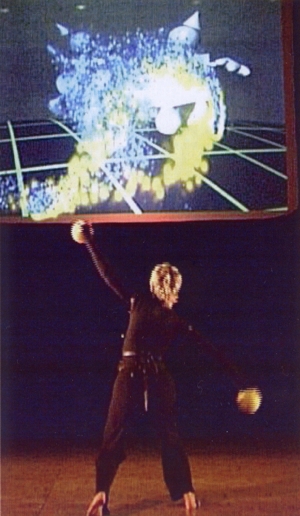
Still Life is a movement interface that was developed by the MindGames group at MIT MediaLabEurope using the Symphony framework, in collaboration with physiotherapists at the Central Remedial Clinic in Dublin.
The project’s interface is designed to creatively reward a participant for controlling their physical movements in a calm and measurable way. It can be customized so that a patient is rewarded for practicing a movement over and over again and getting it correct, thereby turning previously monotonous exercises into an engaging interaction. The program is also able to track progress, so that a physiotherapist needn’t always be present to monitor improvement during daily exercises.
From Physiotherapy to the Féileacán Project
Still Life leapt from the world of physiotherapy into the performing arts in September, 2003, as part of the Féileacán project, a performance that had its debut at the closing ceremonies of the 2003 conference for the Association for the Advancement of Assistive Technology in Europe (AAATE 2003). (Féileacán is the Irish word for ‘butterfly.’)
Féileacán united the teenagers from four Special Schools in Ireland who both inspired and expressed the project’s narrative. The Féileacán itself is a symbol for rebirth that provides the focus of the narrative: the children of the world, fed up with prejudice and poverty, build a spaceship to take them to a better world. The ship evolves into the Féileacán that guides them to a new space where they can breathe new life, encounter new friends, and overcome their fears.
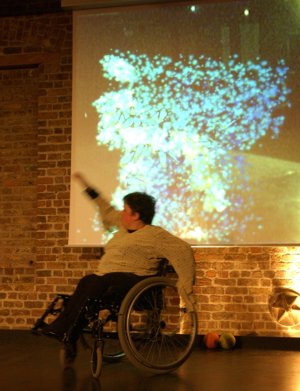
The Féileacán story is told through a dance performance that stars the children themselves alongside Dublin’s Counterbalance dance troupe. The performers are supported by a variety of innovative technologies, including Still Life, that facilitate new forms of expression. Still Life is presented on a wall-sized screen behind the performers, effectively turning that wall into a “magic mirror†in which the performers are reflected. The program tracks their movements and responds in a variety of ways – for example, by causing dancers to glow, orbs to radiate energy, and elements of the new world to be revealed as though they were being painted by the movement of the performers.
Still Life is just one of the projects the MindGames group has worked on as part of their contribution to the European Year of People with Disabilities. Other projects include Mind Balance – a game that uses EEG brain wave activity as a control interface – and Biomelodics, which uses musical biofeedback to help teach a participant to control their heart rate.
Anima Obscura: Performance at the United Nations, Geneva
In December of 2003, the Féileacán team re-united for a performance at the United Nations in Geneva, for the World Summit on the Information Society. The performance, called Anima Obscura, dealt with themes of control, and the interplay between the real and virtual worlds. The entire interactive component of the show’s technology was provided through Still Life.
For Anima Obscura we added several new features to Still Life, including the ability for 3D characters in the magic mirror to interact with elements of the real world. As one example, dozens of butterflies can now chase around the motion glitter and land on the performers when they remain still.
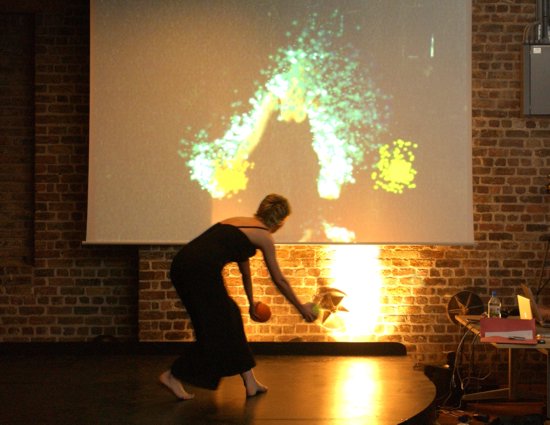
Technical Notes
Still Life was the first application developed with each revision of Symphony, of which there were three developed at MediaLabEurope (up to February 2004).
Still Life is written entirely in .NET managed code (in the language C#) — even the processor-intensive video analysis bits. Some of Still Life’s effects produce and destroy literally thousands of new objects a second — an egregious abuse of memory that is handled with great panache (and without hiccups) by the Common Language Runtime’s garbage collector.
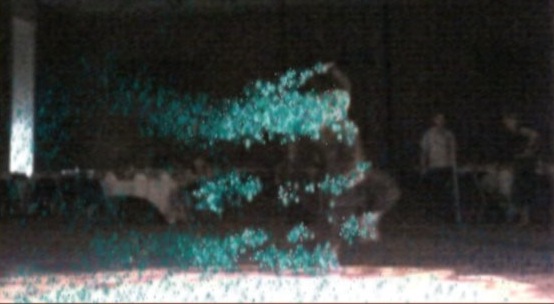
High Resolution Images (from various performances)
Can be downloaded here in a compressed .zip file, or here on my Flickr photostream.
Press Coverage
Here are some articles from the local papers related to the Dublin performances.
